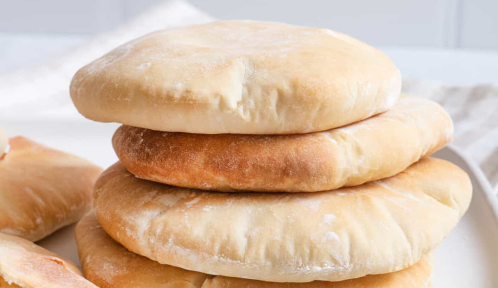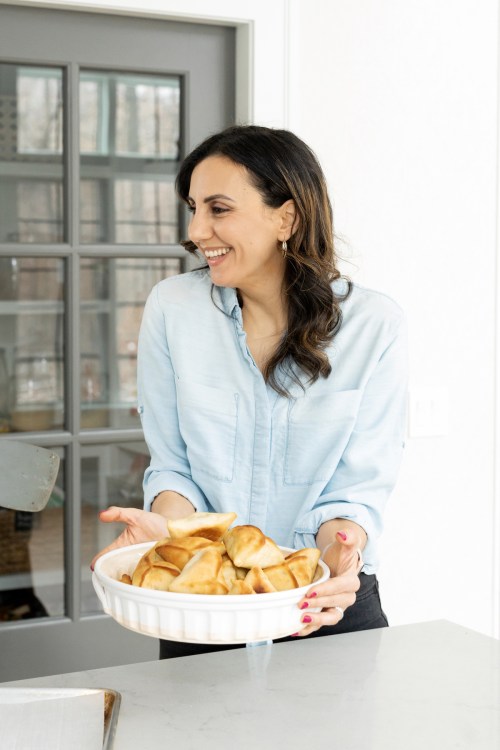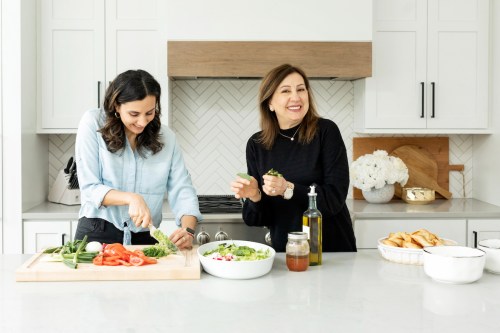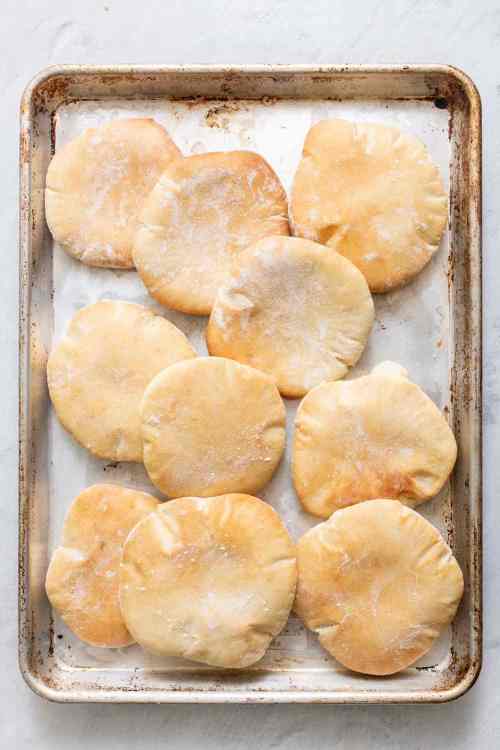This Delicious 5-Ingredient Pita Bread Recipe Is Easy Enough for First-Time Bakers
Discover why Feel Good Foodie, a Lebanese recipe developer, believes pita bread is essentially the glue to her culture’s cuisine.

You likely know Yumna Jawad as Feel Good Foodie, her persona across social media. (You know, the wildly popular recipe account with over four million followers on Instagram alone?) But what you might not know about Jawad, the creative talent behind the brand, is how her cultural background influenced her passion for cooking from a young age.
Experts in This Article
recipe developer and content creator behind Feel Good Foodie
Jawad comes from a Lebanese household where cooking everything from scratch was the norm. As such, she picked up a knack for making delicious meals while watching her mom make meal after delicious meal early in life. Since then, Jawad has developed and shared thousands of recipes with the world, many of which highlight her culture’s roots. We had the chance to catch up with Jawad, who delved into one food near and dear to her: Lebanese pita bread. Ahead we delve into the significance of this food, how she likes to consume it daily, and an easy recipe so you can make it too.

How Jawad’s background has influenced her cooking
Jawad grew up in a small, rural town in Africa until she was about 11 years old. During those years, she didn’t have much access to dining options outside the home (there were about two or three restaurants at most, she recalls, and just one grocery store in the area she lived). This meant that her family relied on making fresh, home-cooked meals daily. But when a civil war broke out in her then hometown, Jawad and her family migrated to the U.S., where their cooking routine changed drastically.
Once in their new home, Jawad and her mom found easier access to ingredients for cooking a wider array of foods without compromising flavor or nutritional value. “We discovered shortcuts of ways to still deliver that home-cooked quality type of meals, but in just a more convenient way,” Jawad says. “My mom didn’t have to make her own tomato paste from scratch anymore—we could finally buy it instead. While watching my mom do this, I started to become really inspired by how amazing the food still looked and tasted and felt in my body, but with just these conveniences.”
Since then, Jawad has focused her recipe development on home-cooked meals that make you feel “so good” (it’s so true) while incorporating the flavors she loves most, many of which are tied to her Lebanese heritage and her mother’s cooking.

Pita bread’s prominence in Lebanese cuisine
One integral part of many meals in Jawad’s household is Lebanese pita bread. “There are a lot of cultures that have an iconic bread that they’re known for,” Jawad says. And according to her, it’s hands down pita bread for Lebanese folks. “It’s not like a burger bun where people mostly eat it for like lunch and dinner. I feel like pita bread is something that glues all the meals together,” she adds.
Jawad notes that pita bread is especially integral in Lebanese-style breakfasts. “For breakfast, we tend to have more savory meals. For example, we don’t do pancakes and waffles. We’ll usually eat a savory breakfast that includes beans, eggs, cheese, vegetables, and of course, pita bread,” Jawad says.
But this isn’t the only way she enjoys pita. As she mentioned earlier, it makes for the perfect midday snack served with olive oil and za’atar or a lunch sandwich packed with fresh produce like mint, tomatoes, and cucumbers. “It just feels like meals are incomplete without it,” Jawad says.

According to Jawad, Lebanese pita bread is thinner and wider (about 10-inch circumference) than similar versions from other nations and can be consumed hot, cold, or at room temperature. The only issue? Making it at home is really difficult without the proper equipment. As such, Jawad has found ways to adapt her recipe so she can enjoy a similar style of pita bread at home. The good news for us? Jawad doesn’t gatekeep anything. Ahead, we have her favorite pita bread recipe that calls for only five pantry-staple ingredients and results in a pillowy-soft bread that’s perfect for any time of the day.
But before we jump right into the recipe, here are a few pro tips directly from the source for preparing pita bread from scratch. When baking the bread, ensure the oven temperature is extremely hot—like, as hot as it can go. This will help the dough puff up as it cooks and create that iconic pocket-like structure. Make too much dough? No need to worry. Jawad says you can freeze the dough balls or the pita bread once it’s cooked off—either way works well. Lastly, she recommends pairing the pita bread with two of her all-time favorite dip recipes: Labneh and authentic Lebanese-style hummus. The perfect snack doesn’t exis—.

Lebanese pita bread recipe
Yields 12 servings
Ingredients1 1/4 cup warm water2 Tsp granulated sugar2 1/4 Tsp instant dry yeast (1 packet)3 cups all-purpose flour, plus more for dusting1 Tbsp olive oil1 Tsp salt
1. In a large bowl or stand mixer fitted with a hook attachment, dissolve sugar in warm water. Sprinkle in yeast and let stand until mixture is foamy, about 5 minutes.
2. Add 1 cup flour, olive oil, and salt and stir with a wooden spoon. Slowly add the remaining flour until a shaggy dough is formed. Knead for 10 minutes in the stand mixer until the dough comes together and is smooth.
3. Cover the dough with a moist kitchen towel. Allow dough to rise in a warm, dark place until the dough has doubled in size, about 1 hour.
4. Punch the dough down and separate dough into 12 round pieces by pinching off some of the dough. Use your hands to tuck the sides and roll them into an even ball, covering the pieces with a moist kitchen towel as you work. Allow to rest for 10 minutes.
5. Use a rolling pin to roll out the dough as evenly as possible. This is important to ensure that the pita puffs up. Transfer the rolled-out pita onto small squares of parchment paper floured lightly.
6. Preheat oven to 550°F (or to the highest temperature it will go) with the baking sheet inside the oven. While the oven is heating, allow the pita rounds to rest for about 30 minutes.
7. Flip the rolled-out pita onto the heated baking sheet. Bake on the bottom rack of your oven until lightly golden brown and puffed, about 3-5 minutes. Wrap them in a clean kitchen towel as soon as they come out of the oven.
Pita bread? Check. Beet hummus to dip it into? Check:
Sign Up for Our Daily Newsletter
Get all the latest in wellness, trends, food, fitness, beauty, and more delivered right to your inbox.
Got it, you've been added to our email list.










